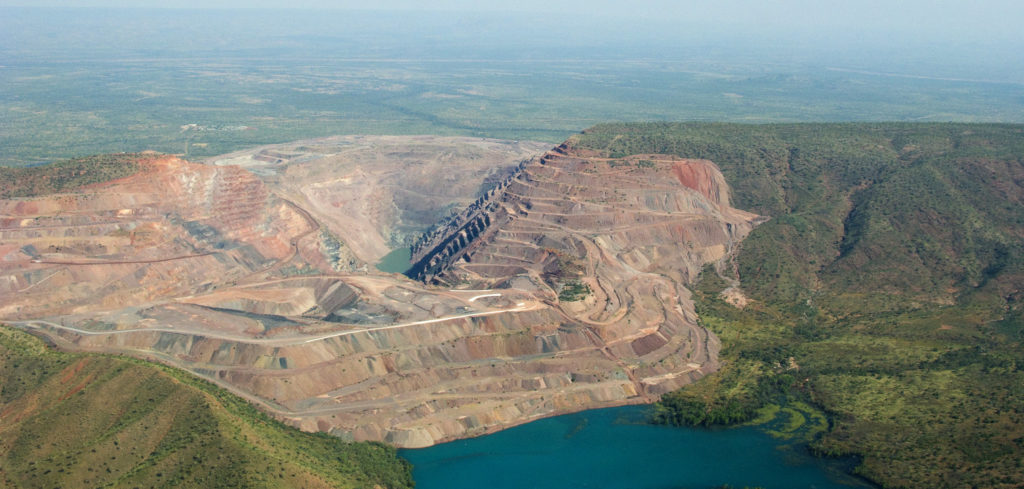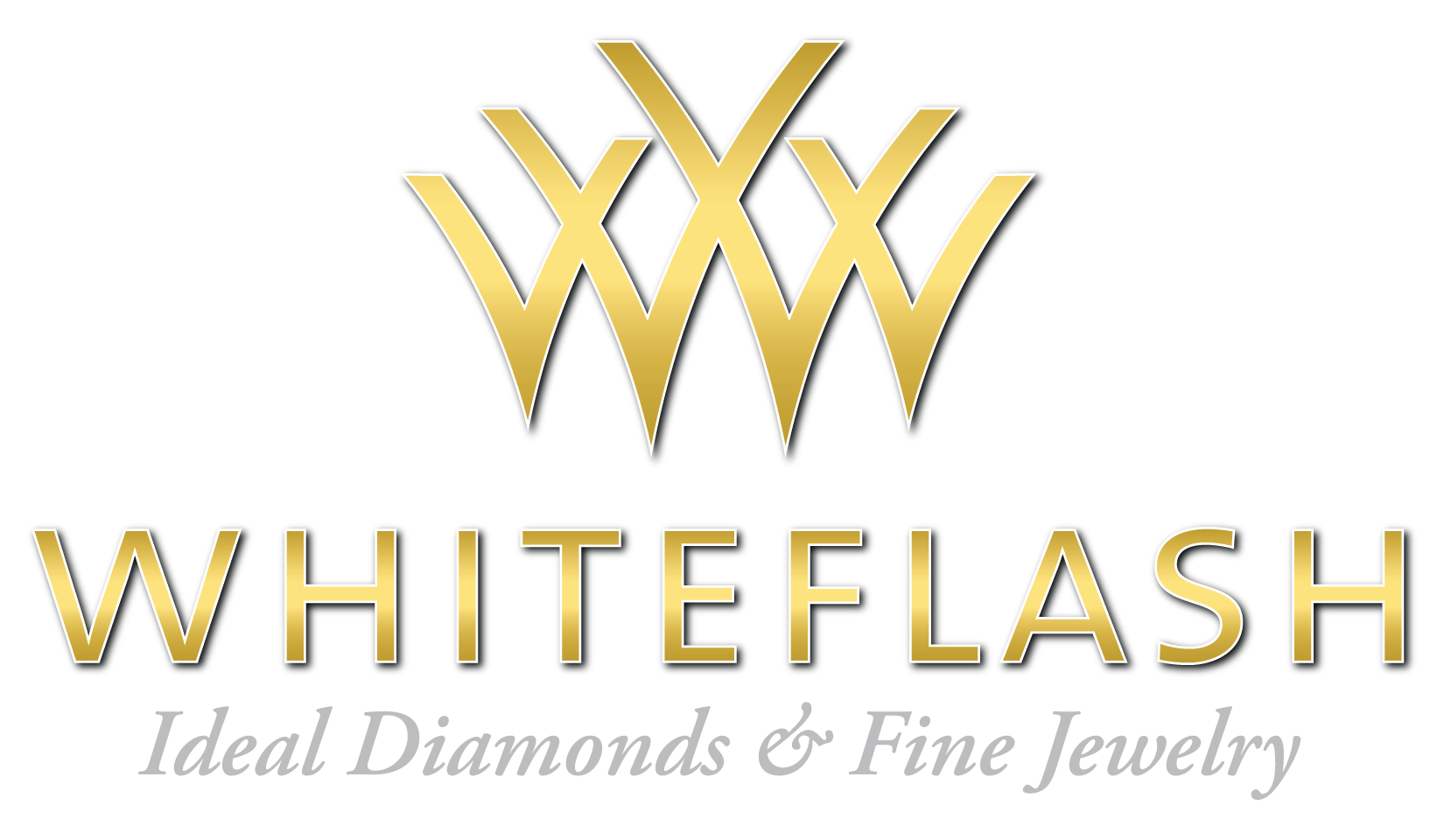Conflict-free Diamonds: What They Are And Where To Buy Them
As you shop for diamonds, you’ve likely seen the terms conflict-free diamonds or ethical diamonds. Here, I’m going to answer a few of the most common questions about conflict-free engagement rings and diamond jewelry:
- What does “conflict-free” or “ethical” mean when referring to diamonds?
- Why is buying a conflict-free diamond important?
- Where can you buy conflict-free engagement rings and diamonds?

What are conflict-free diamonds?
Conflict-free diamonds are diamonds that have been mined and brought to market without benefiting any terrorist groups or violently-oppressive government groups.
More specifically, conflict-free or ethical diamonds have been mined and sold in compliance with an international trade agreement known as the Kimberley Process. (More on that below.)
Conflict-free diamonds are the opposite of so-called “blood diamonds”.
The ‘blood diamond’ problem
The problem of terror groups and militia groups using diamond mining to finance violent activity first hit the public consciousness in a big way in the early 2000’s, most effectively via the 2006 movie, Blood Diamond.
Sixty-five percent of the world’s diamonds come from Africa, where terrorist sects, rebel militias and violent government regimes have thrived in some countries.
Although some industrial diamond mines are owned by regulated international companies, many mines are smaller-scale operations. Imagine gashes in the ground and a few men digging in the mud for pennies per hour. I’ll call that small-scale mining here.
In the past (and with more difficulty, even now) these militias or terror groups could control small-scale diamond mines. They would sell diamonds to unscrupulous traders who could find ways of getting these diamonds into the global supply chain. The diamonds would be cut, sold again, and finally sold to a consumer, who would have had no idea the diamond’s profits went into the pockets of terriorists.
These groups would use profits to buy arms and finance terror campaigns that lead to the deaths of hundreds of thousands of people. In addition, some groups would torture and kill the laborers mining the diamonds for suspected theft — or even for not working fast enough.
African blood diamonds are real, and the atrocities associated with them have been documented for decades by NGOs like Global Witness and others.
The attempted solution: The Kimberly Process
Consumer outrage over blood diamonds eventually grew loud enough to force governments and the diamond industry to take action. The most important international accomplishment in combatting blood diamonds was the Kimberley Process.
The Kimberly Process is a self-policing agreement among diamond industry players to avoid the purchase and shipment of diamonds that have been used to finance terror or rebel groups.
It’s a first step toward combatting the trade of blood diamonds. But it’s complicated and not entirely effective.
The official website of the Kimberley Process maintains that it has disrupted 99.8% of trade in conflict diamonds worldwide. That’s a reasonable claim, but it may be slightly optimistic. The claim is based on the fact that Kimberley Process participants account for 99.8% of diamond produced. (The statement assumes 100% success among all participants.)
Although everyone agrees that the Kimberley Process has reduced the use of diamond mining to finance militias and terror groups, everyone also acknowledges that it still happens. It’s just not as common as before.
How does the Kimberly Process work?
The Kimberley Process is a system of certification developed by the United Nations and the respectable diamond industry players. It’s designed to make sure that diamonds are mined and shipped without connection to militias, terror groups, or criminal activity. It aims to freeze any illicit diamonds out of legitimate trade.
Notably, it doesn’t attempt to regulate the ethical treatment of workers, indigenous groups, or residents in or near diamond minds. The Kimberley Process, and the terminology of “Blood Diamonds” or “Conflict Diamonds” are strictly concerned with diamonds that are connected to terrorist and militia groups.
The Kimberley Process has 56 participants representing 80 countries. That includes the United States.
How does it work?
The Kimberly Process creates an audit trail between the moment a diamond is mined and the time it lands in a jeweler’s inventory.
Diamond batches, when mined, are certified as compliant with the Kimberley Process. And at every “stop” along the way to market, this certification is viewed, recorded, and passed along.
Participants in the Kimberley Process must work in countries that have created national legislation and institutions to enforce it. They must implement export controls, import controls, and internal controls. They have to be transparent with records and statistical data.
Participants can only trade with other participants who also meet the requirements.
International shipments of rough diamonds must have a Kimberley Process certificate guaranteeing that they are conflict-free.
This reduces the ability of rebel groups, militia groups, and terror groups to use diamond mining as a direct source of revenue. And that’s obviously a huge step forward.
Why the Kimberley Process isn’t perfect
The weaknesses of the Kimberley Process include:
- It’s voluntary
- It’s self-policing, not overseen by a central regulating entity
- It’s subject only to peer review, not to enforcement from a central entity
- It doesn’t attempt to document or discourage unethical behavior other than illicit violence
Why is it important to buy a conflict-free diamond?
Unfortunately, money is an extremely powerful motivation, especially for desperate individuals and groups. It’s also lifeblood to any terror group or militia group.
If a terrorist group has less money, they can buy fewer weapons and pay fewer members. (Many members of militia groups aren’t wild-eyed true believers in the cause, necessarily. Many are simply taking a job. And even if they are true believers, they still need money to buy food for themselves and their families.)
Even militias who compel members to serve as slave soldiers (as for example, child soldiers) still must pay money to obtain weaponry.
The ability for any violent group to inflict harm or hold power comes down to money. If you can take that money away, you can eliminate their power and capability to murder.
As important as preventing terribly bad actors from profiting off of diamonds, conflict-free diamonds are important in another way: they support the good actors. They support (ideally) employers and laborers in legitimate mining companies.
That said, it is important to emphasize that conflict-free diamonds are not the same thing as ethical diamonds. The Kimberly Process only ensures violent groups are not profiting from a diamond. It does not ensure, for example, that the laborers who mined the diamond were treated well and paid a fair wage. Or that the mining company was taking steps to minimize its environmental impact.
A true “ethical” diamond is a step above a conflict-free diamond. Ethical diamonds, like fair-trade coffee, are products that come from companies who meet some minimum requirements for fair labor practices and environmental damage amelioration.
How to avoid buying a blood diamond
To avoid buying a blood diamond, the first step is to read the conflict-free diamond policy of any retailer you’re shopping. At a minimum, you want to see evidence that they only sell diamonds with a Kimberly Process certificate.
Virtually all reputable retailers have such a policy. But it’s worth checking specifically. Here are examples of the policies at two of the largest online diamond jewelers: Blue Nile and James Allen.
The jeweler Brilliant Earth has built its entire brand on selling ethical diamonds. They go above-and-beyond the Kimberly Process using blockchain technology to track the source and chain-of-custody of every diamond they sell.
While we can’t know for 100% sure that no blood diamonds slip into the mix. It happens. For example, the United States Customs & Border Protection agency has intercepted diamonds with forged Kimberly Process certificates as recently as 2019. But, you can know for fairly certain, given the relative success of the Kimberley process, that your diamond is likely not a blood diamond. You can at least know that you’re doing what you can.
If you really want to be a stickler, you can ask the dealer what mine or country the diamond you are considering came from. Brilliant Earth lists a diamond’s country of origin on the webpage of every diamond it sells.
If you want to be 100% sure you’re buying a conflict-free diamond, consider a lab-created diamond.
Lab-created or “synthetic” diamonds are real diamonds that are grown in a laboratory rather than mined from the earth.
A lab-grown diamond is not a fake diamond. It’s not a simulated diamond. It’s 100% a diamond, just like an earth-created diamond. Lab-created diamonds are even graded by major diamond-grading labs such as the IGI (International Gemological Institute). Lab-created diamonds are physically identical to “natural” earth-mined diamonds!
Since diamond labs are located in first-world countries, you can feel more sure that the workers are treated fairly, since regulations, laws, and workers’ choices make that much more likely. On the other hand, when you buy lab-created diamonds, you’re also preventing your money from supporting anyone in a third-world country.
It’s arguable that the most ethical way to buy diamonds is to support conflict-free, ethical mining companies in Africa. Their laborers may not earn as much as an employee in a country like the United States or Canada. But if they’re earning a fair wage for their country, your purchase arguably helps them more than you help the first-world employee.
Either way — buying conflict-free earth-mined diamonds that have met the Kimberley Process requirements, or buying lab-created diamonds from a high tech lab — you’re doing what you can to keep your money from funding terror and militia groups.
Where to buy conflict-free engagement rings and diamonds
The world’s largest online jewelers all sell conflict-free engagement rings and diamond jewelry. But one jeweler, in particular, goes above and beyond to ensure every diamond they sell is ethical and responsibly-sourced: Brilliant Earth.
The truth is that any reputable jeweler should be able to provide evidence that the engagement rings and other diamonds they sell conforms to the Kimberly Process.
The largest online diamond jewelers like Blue Nile and James Allen advertise conflict-free engagement rings. Brilliant Earth bases its reputation on selling Beyond Conflict Free™ diamonds. They select only diamonds they have carefully selected for their ethical and environmentally-responsible origins.
Learn more about Brilliant Earth in our detailed review.
Where not to buy diamonds
The one thing not to do is to buy from questionable or shady Internet diamond retailers, or even impressive looking Internet retailers who do not have an explicit policy of selling only conflict-free diamonds.
Granted, if they are selling from inside the United States or Canada, they likely have legitimate access only to conflict-free diamonds. On the other hand, all kinds of things can be, and are, smuggled into the United States and Canada. We shouldn’t expect that illicit diamonds are any exception.
Conclusion
Now that you know what conflict-free diamonds are, and why it matters, you also know what to do. And, with the protocols in place, it’s fairly easy.
Buy only from highly reputable retailers with explicit policies in place. To be 100% sure, buy a lab-created diamond. Then you can feel good about getting the best diamond you can find — not only in the 4Cs, but also in what I like to call the “Fifth C — Conflict-Free.”
Recommended Jewelers
James Allen
James Allen is the most competitive diamond vendor with more than 150,000 loose diamonds in inventory. They have been a leader in selling diamonds online and pioneered 3D imaging so you can see the exact diamond you're buying in exquisite detail. You'll find it hard to beat James Allen in terms of price or selection. Read our James Allen review. |
Whiteflash
Whiteflash is the home of "A Cut Above" diamonds which are among the best quality round- and princess-cut diamonds in the world. With superior diamond photographs and videos, Whiteflash's diamonds seem to come to life -- even online. Read our Whiteflash review. Shop Whiteflash » |
Brilliant Earth
Brilliant Earth is the global leader in ethically-sourced jewelry. Brilliant Earth goes above and beyond existing standards to offer “Beyond Conflict Free Diamonds” that they select for their ethical and environmentally-responsible origins. With over 120,000 diamonds in inventory, you can be sure to find your perfect diamond and feel good knowing it was responsibly-sourced. Read our Brilliant Earth review. Shop Brilliant Earth » |
Blue Nile
Blue Nile is the world's largest online jeweler. Their reputation for quality and customer service is unparalleled in the industry. Blue Nile offers free shipping, a 30-day return policy and satisfaction guarantee. Read our Blue Nile review. Shop Blue Nile » |